Welcome to New Retro Week, a celebration of the biggest artists, hits, and cultural moments that made 2012 a seminal year in pop. MTV News is looking back to see what lies ahead: These essays showcase how today’s blueprint was laid a decade ago. Step into our time machine.
By Lai Frances
For two days in July 2019, New York’s Jacob K. Javits Convention Center and Madison Square Garden were simultaneously filled for the first time with the rapturous electric thumps of South Korean pop music. About 55,000 fans flocked to the venues to kick off the year’s stateside trek of KCON, the first-of-its-kind Korean culture festival that serves as a convention by day and a concert by night, to connect with friends and bask in the light of their favorite K-pop stars and influencers.
For five years prior, the annual convention had made the Prudential Center in Newark, New Jersey, its East Coast home. The majorly upgraded locales meant attendees no longer had to worry about a summer heat wave while waiting in line for a spot on the concert floor, join a dance workshop in the sun, or sample the sumptuous spicy-sweet flavors of bibimbap. The spaces allowed fans to walk freely through spacious halls filled with activations, photo walls, and larger-than-life installations from Korean brands such as Kakao Friends, Bibigo, and Innisfree. And each evening, K-pop acts like TXT, NU’EST, The Boyz, and (G)I-DLE had their chance to shine on the world-renowned Madison Square stage. Fans sang along to the music and cheered wildly, waving their luminous lightsticks in hand.
In just 10 years, KCON has become a mecca for Korean pop culture, the international spread of which is commonly known as the Hallyu wave. Its evolution runs parallel to the seismic global expansion of K-pop itself, which has been driven in large part by the support of its fans. Surrounding KCON’s 2019 summer festivities were headlining stateside tours from top Korean acts like TWICE and Stray Kids, while Korean celebrities such as Girls’ Generation’s YoonA were invited to New York Fashion Week. And today, K-pop is more popular and accessible than ever, as singles by superstar acts like BTS infiltrate the Billboard 200 charts and receive radio play worldwide.
But a decade ago, when KCON was first conceptualized and launched, it was a different landscape entirely. The second wave of K-pop was already in full throttle in South Korea, as BigBang released the foundational EP Alive featuring classic hits like “Fantastic Baby,” but abroad, the seedlings of the Hallyu wave were only beginning to blossom in the mainstream. SM Entertainment sold out its legendary one-night-only SMTown concert at MSG, featuring every artist under its roster at the time, including BoA, TVXQ!, Girls’ Generation, Super Junior, f(x), and SHINee. Girls’ Generation released their first English single, the pop track “The Boys,” which was revolutionary in its Western appeal. And Psy’s “Gangnam Style” became an overnight viral sensation, exploding onto the music charts, peaking at No. 2 on the Billboard Hot 100 and No. 1 on the Billboard Rap Chart, while also amassing the most views of any YouTube video that year.
“It feels like a million years ago,” says Kijoo Kim, former head of KCON and vice president of its parent company, CJ Entertainment & Media. “We had a hunch there was a huge group of K-pop fans [in the United States], but we didn’t know how to prove it.”
One of the founders of KCON, Kim worked tirelessly on planning the convention from her first day at CJ E&M. The idea for the event first started around May 2012 as K-pop tours, which once stopped only on the nearby West Coast, kept growing and expanding elsewhere in the U.S. “We tried some physical and digital experiments such as social campaigns,” she notes. “But it wasn’t enough.”
We had a hunch there was a huge group of K-pop fans [in the United States], but we didn’t know how to prove it.
“So we suggested, like, actually urged the company to host a U.S.-style, fan-based culture festival and not just a concert,” Kim continues. “We wanted to show and celebrate K-pop culture with fans, and voila! It was KCON.”
The first KCON took place on October 13, 2012, as a single-day event at the erstwhile Verizon Wireless Amphitheatre (later known as the Irvine Meadows Amphitheatre) in Irvine, California. It was arranged like a street-long block party, or perhaps a bustling flea market, with white tents in various sizes propped up around the arena. Panels and artist meet-and-greets were held under the largest structures, while smaller pavilions were reserved for fan club meetups, food vendors, and merch stalls. Here, the hunger for connecting with idols was so voracious that the convention sold out of goods from most performing artists — NU’EST, EXO-M, B.A.P., and G.NA — in the early hours of the event. One attendee, Billboard reported at the time, was taken to paramedics after suffering an injured leg during an autograph session, prompting KCON to implement stricter safety protocols in subsequent years.
Meanwhile, bands like 4minute and VIXX delivered sizzling choreography and energetic vocals on the lone stage, as if the event were a live recording of MNet’s weekly music show M! Countdown, with flashy lights and explosive pyrotechnics. Between signings and performances, fans danced to the catchy sounds of Super Junior and Girls’ Generation, while some flaunted colored skinny jeans and leather clothing inspired by the outfits worn on stage. The day drew over 10,000 fans, 55 special guests, and six artists taking part in 25 programs outdoors. It was an early success and a taste of what was to come.
By the following year, these numbers doubled. In 2013, KCON moved to the former Los Angeles Memorial Sport Arena, this time boasting a whopping 60 programs and 110 panelists. Tents were noticeably bigger, and mini-platforms were constructed for industry panels and talent showcases. Eight of the year’s biggest names in K-pop — including EXO, f(x), and 2AM — were invited to perform on concert stages that resembled those seen at Korean year-end music festivals. Some were lined with LED lights that shone through hazy smoke effects. Closing out the convention was a bombastic performance of “Niliria” by G-Dragon, who was joined by hip-hop icon Missy Elliot. The two all-star artists swapped verses in what seemed a poignant encapsulation of K-pop’s burgeoning international power.
“Back in 2012, and even in 2013 and 2014, KCON was [unheard of],” Kim explains. “Even K-pop, too. But as KCON got bigger, as well as K-pop, it has been a must-visit summer event for many fans, not just for locals. 30 percent of our overseas guests are from Latin America, Asia, even from Europe.”
As Kim notes, K-pop’s global influence has grown exponentially since. The Korean music industry saw a 27.8 percent increase in revenue between 2011 and 2012, earning $3.4 billion in the first half of 2012, according to Billboard. As Korean singers and idol groups entered new markets across Asia, Japan was perhaps the most receptive, thanks to the early crossovers of BoA, TVXQ!, BigBang, Girls’ Generation, and other artists in the early aughts. It seemed only a matter of time until KCON followed suit in 2015, drawing 15,000 people to Tokyo’s Saitama Super Arena with acts like Sistar, Lovelyz, Infinite, and Block B. That same year, then-rookie band Monsta X joined the line-up overseas at the sweeping Staples Center in downtown Los Angeles.
“It was our first time performing in front of hundreds and thousands of people, so we were a bit nervous at first,” the group’s youngest, I.M., recalls. The performance marked a major milestone in the group’s history as their first appearance in the U.S. “Yet we received more and more energy as we performed.”
“Performing at Staples Center was such an honor for us,” member Minhyuk says. “We were rookies back then, and we tried very hard to show our best so that those who did not know us could be wowed by us.”
Part of KCON’s appeal for established groups and emerging soloists alike is the opportunity to reach new audiences in addition to their already dedicated followers. The convention is a space for connection and discovery, as special stages and collaborative performances allow artists to shine in unexpected ways. The M! Countdown stage, for example, functions like a concert version of the popular Korean music show, with artists performing their own music, covers of other K-pop songs, and collaborating with other musicians. And today, while the Los Angeles event remains the hub for all things Hallyu, KCON has bases in eight countries, from France to Abu Dhabi, Australia to Thailand.
A performance at KCON’s Mexican outpost in 2017 sticks out as one of Monsta X main vocalist Kihyun’s favorites of all time. The balladeer took the stage for a heartwarming cover of “Beautiful” off the soundtrack of the 2016 drama Goblin. “I received a lot of compliments for that stage,” Kihyun says. “Also, the energy I got from the audience was mind-blowing.”
 Matthew Simmons/Getty Images
Matthew Simmons/Getty Images“KCON has given us a chance to meet and perform in front of a whole new audience,” rapper Joohoney adds. “We get to meet not only Monbebes but also fans of other K-pop groups or just K-pop in general. This itself helped us a lot, especially during our rookie years.”
“It’s definitely made me fall in love with new groups, watching them perform on stage,” says Liz Cook, a BigBang fan who has been attending KCON in Los Angeles since 2013. “And for the longest time, KCON was the one place to see girl groups in the United States.”
For Cook, as for many other attendees, KCON is, in large part, about the community it fosters. “It’s helped me form some long-lasting friendships with people that I knew via podcasts or blogs, who I then met in person,” she says. But what sets KCON apart from other conventions is a unique cultural exchange: During the convention, fans mix and mingle with others at workshops, panels, and showcases, united by a shared passion for the music, art, and food of Korea. In the future, Kim hopes KCON will reflect a growing interest in K-dramas like Netflix’s wildly popular Squid Game, hosting fan meetups with actors or even world premieres of blockbuster series.
“When I first took on my role in 2016, there were about 40 programs at KCON New York and 120 programs at KCON Los Angeles,” says Winnie Galbadores, who first attended the convention in 2013 before later accepting a position on its programming and marketing team. By 2019, attendance had skyrocketed at KCON, which welcomed more than 158,000 people to the bicoastal celebration. “Every year, it continues to get bigger and better on both the concert side and convention side.”
“We didn’t expect KCON to grow this much, honestly,” Kim says. “We knew we would grow and KCON would expand, but we did not expect it to happen so rapidly.”
In 2020, as K-pop led the rest of the music industry in pivoting to virtual concerts and online gatherings amid the coronavirus pandemic, KCON followed suit. Though the year’s in-person festivities were put on pause, CJ E&M’s quick response with KCON:TACT, a virtual weeklong convention, was a smash success nonetheless. Holding Twitter Spaces sessions in place of in-person panels, as well as virtual workshops and meet-and-greets on YouTube or Zoom, the digital convention attracted more than 4.8 million viewers from 152 countries, per Forbes. The effort effectively gave more fans than ever before a glimpse into the colorful world of KCON.
While some fans may be eager to see KCON return in-person — “I’d hope that it could return to Thailand, Japan, Mexico, Australia,” Cook says, “and I know there are so many fans in India and South America that would be ecstatic to have KCON there, too” — Kim says KCON will continue the hybrid model. That means that, while the future of large-scale public gatherings and events is still uncertain, KCON will continue to expand to become a home for Hallyu fans across the globe, a place for friends, families, and artists to create lasting memories together.
“For our attendees, even in 10 years,” Kim says, “I hope they can visit and enjoy KCON as an annual tradition for friends and family [to enjoy].”


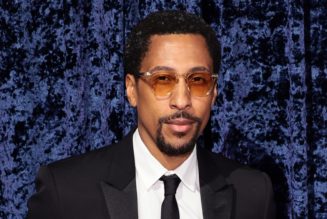


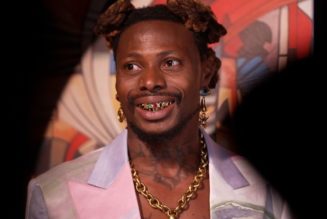
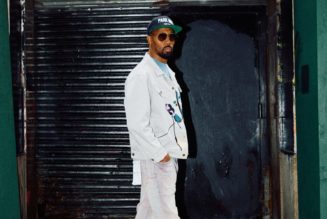

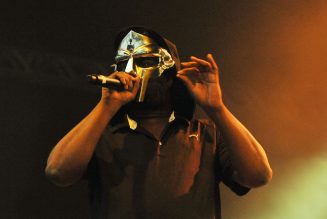
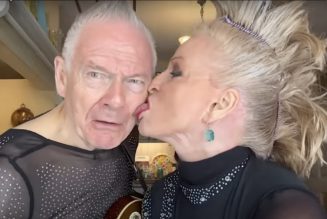

Tagged: music